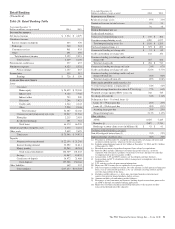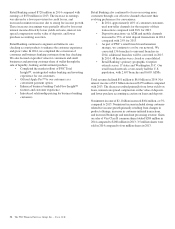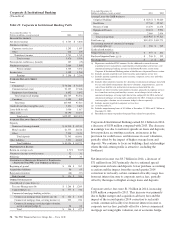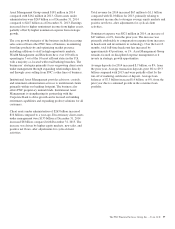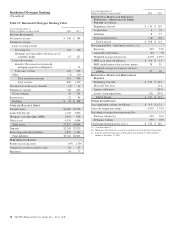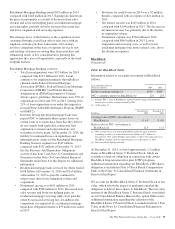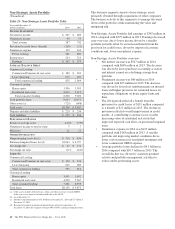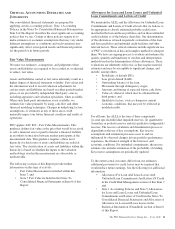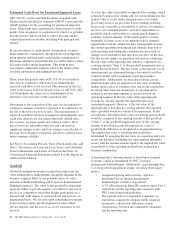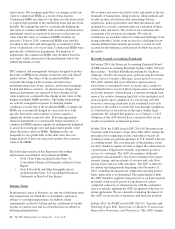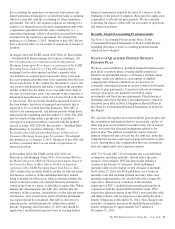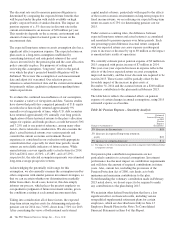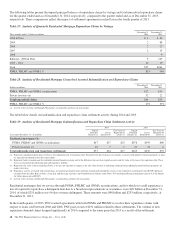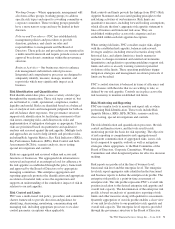PNC Bank 2014 Annual Report Download - page 79
Download and view the complete annual report
Please find page 79 of the 2014 PNC Bank annual report below. You can navigate through the pages in the report by either clicking on the pages listed below, or by using the keyword search tool below to find specific information within the annual report.
C
RITICAL
A
CCOUNTING
E
STIMATES AND
J
UDGMENTS
Our consolidated financial statements are prepared by
applying certain accounting policies. Note 1 Accounting
Policies in the Notes To Consolidated Financial Statements in
Item 8 of this Report describes the most significant accounting
policies that we use. Certain of these policies require us to
make estimates or economic assumptions that may vary under
different assumptions or conditions and such variations may
significantly affect our reported results and financial position
for the period or in future periods.
Fair Value Measurements
We must use estimates, assumptions, and judgments when
assets and liabilities are required to be recorded at, or adjusted
to reflect, fair value.
Assets and liabilities carried at fair value inherently result in a
higher degree of financial statement volatility. Fair values and
the information used to record valuation adjustments for
certain assets and liabilities are based on either quoted market
prices or are provided by independent third-party sources,
including appraisers and valuation specialists, when available.
When such third-party information is not available, we
estimate fair value primarily by using cash flow and other
financial modeling techniques. Changes in underlying factors,
assumptions, or estimates in any of these areas could
materially impact our future financial condition and results of
operations.
PNC applies ASC 820 – Fair Value Measurements. This
guidance defines fair value as the price that would be received
to sell a financial asset or paid to transfer a financial liability
in an orderly transaction between market participants at the
measurement date. This guidance requires a three level
hierarchy for disclosure of assets and liabilities recorded at
fair value. The classification of assets and liabilities within the
hierarchy is based on whether the inputs to the valuation
methodology used in the measurement are observable or
unobservable.
The following sections of this Report provide further
information on this type of activity:
• Fair Value Measurements included within this
Item 7, and
• Note 7 Fair Value included in the Notes To
Consolidated Financial Statements in Item 8 of this
Report.
Allowances for Loan and Lease Losses and Unfunded
Loan Commitments and Letters of Credit
We maintain the ALLL and the Allowance for Unfunded Loan
Commitments and Letters of Credit at levels that we believe to
be appropriate to absorb estimated probable credit losses
incurred in the loan and lease portfolios and on these unfunded
credit facilities as of the balance sheet date. Our determination
of the allowances is based on periodic evaluations of the loan
and lease portfolios and unfunded credit facilities and other
relevant factors. These critical estimates include significant use
of PNC’s own historical data and complex methods to interpret
them. We have an ongoing process to evaluate and enhance the
quality, quantity and timeliness of our data and interpretation
methods used in the determination of these allowances. These
evaluations are inherently subjective, as they require material
estimates and may be susceptible to significant change, and
include, among others:
• Probability of default (PD),
• Loss given default (LGD),
• Outstanding balance of the loan,
• Movement through delinquency stages,
• Amounts and timing of expected future cash flows,
• Value of collateral, which may be obtained from
third parties, and
• Qualitative factors, such as changes in current
economic conditions, that may not be reflected in
modeled results.
For all loans, the ALLL is the sum of three components:
(i) asset specific/individual impaired reserves, (ii) quantitative
(formulaic or pooled) reserves and (iii) qualitative (judgmental)
reserves. The reserve calculation and determination process is
dependent on the use of key assumptions. Key reserve
assumptions and estimation processes react to and are
influenced by observed changes in loan portfolio performance
experience, the financial strength of the borrower, and
economic conditions. For unfunded commitments, the reserve
estimate also includes estimation of the probability of funding.
Key reserve assumptions are periodically updated.
To the extent actual outcomes differ from our estimates,
additional provision for credit losses may be required that
would reduce future earnings. See the following for additional
information:
• Allowances For Loan And Lease Losses And
Unfunded Loan Commitments And Letters Of Credit
in the Credit Risk Management section of this Item 7,
and
• Note 1 Accounting Policies and Note 5 Allowances
for Loan and Lease Losses and Unfunded Loan
Commitments and Letters of Credit in the Notes To
Consolidated Financial Statements and Allocation of
Allowance for Loan and Lease Losses in the
Statistical Information (Unaudited) section of Item 8
of this Report.
The PNC Financial Services Group, Inc. – Form 10-K 61


